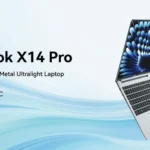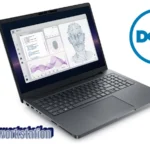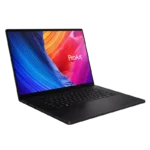If you’ve ever tried to model a detailed engagement ring or render a gemstone under the right light, you know jewellery design isn’t just art — it’s technical. Your laptop needs to be powerful enough to handle precision modelling, color-accurate enough for realistic metals and stones, and reliable enough for long creative sessions.
So, whether you’re a student learning Rhino or a full-time designer using MatrixGold, this is your friendly, no-nonsense guide to the best laptops for jewellery designing in 2025 — tested, compared, and written in plain English.
Also Read: Best Laptops for Rhino 3D
🧭 What Matters Most for Jewellery Designers
Before jumping into the laptop list, here’s what truly counts in jewellery CAD work:
| Key Factor | Why It Matters |
|---|---|
| CPU Performance | Precise modelling tools like Rhino and MatrixGold depend on strong single-core speed. |
| GPU Power | Renders in Blender, KeyShot, or Octane rely on the graphics card. |
| RAM (Memory) | 32GB is the sweet spot; it keeps Rhino, Photoshop, and rendering engines running smoothly together. |
| Display Quality | You need accurate color and high brightness for metals, gems, and textures. |
| Storage Speed | SSD drives save you from long loading times and lost ideas. |
| Cooling & Noise | Rendering gets hot — a good cooling system is essential for stable performance. |
💎 Top Laptops for Jewelry Design in 2025: Power, Precision, and Style
Below are the most reliable and high-performing laptops for jewellery professionals and design students alike — all current, powerful, and ready for creative work.
1. Apple MacBook Pro (M5, 14″ or 16″)
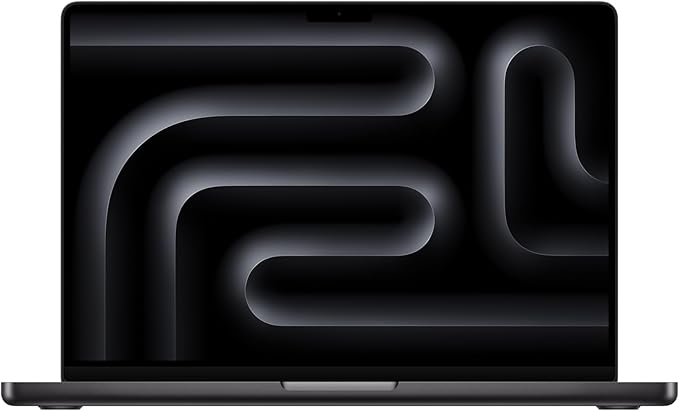
Best for: Designers who love macOS, do Rhino work, and need top display quality.
Specs (Recommended):
- Apple M5 Pro or M5 Max chip
- 32GB unified memory (or more)
- 1TB SSD
- Liquid Retina XDR display (16-inch or 14-inch)
Pros:
- Incredible color accuracy and brightness
- Super-quiet and efficient cooling
- Battery life up to 18 hours
- Perfect for Rhino for Mac and render tasks on Metal engine
Cons:
- MatrixGold and some jewellery plugins are Windows-only
- No Boot Camp on Apple Silicon
If your workflow stays inside Rhino and Metal-optimized renderers, the M5 MacBook Pro is unbeatable. But if your plugins depend on Windows, skip to the next option.
2. ASUS ProArt Studiobook 16 / ProArt P16
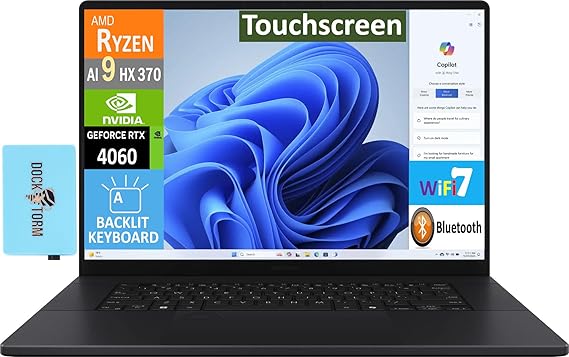
Best for: Designers who want full Windows compatibility and color-perfect OLED displays.
Specs (Recommended):
- Intel Core i9 / AMD Ryzen AI 9 HX
- NVIDIA RTX 4070 or higher
- 32–64GB RAM
- 1–2TB SSD
- 3.2K 120Hz OLED screen
Pros:
- Professional-grade OLED panel with factory color calibration
- ASUS Dial for quick CAD adjustments
- Excellent cooling and port selection
- Handles Rhino + MatrixGold effortlessly
Cons:
- Slightly heavy compared to thin ultrabooks
- Premium configurations can be pricey
This is a serious workstation built for creators. Its OLED display shows golds and diamonds exactly as they should look — brilliant, realistic, and warm.
3. Lenovo ThinkPad P1 (Gen 8)
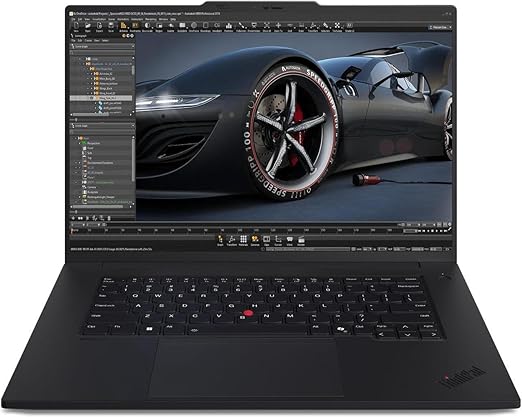
Best for: Professionals who value reliability and certified workstation performance.
Specs (Recommended):
- Intel Core Ultra or i9 CPU
- NVIDIA RTX workstation GPU
- 32GB RAM minimum (expandable)
- 1TB NVMe SSD
Pros:
- ISV-certified drivers for CAD stability
- Long-lasting build and keyboard comfort
- Excellent serviceability and upgrade options
Cons:
- Not as sleek as others
- Expensive in higher GPU variants
If your jewellery studio runs multiple CAD and rendering tools all day, the ThinkPad P1 is made for that kind of workload.
4. MSI Creator Z Series

Best for: Render-heavy designers who push their laptops to the max.
Specs (Recommended):
- Intel i9 HX processor
- NVIDIA RTX 4070 / 4080 GPU
- 32–64GB RAM
- 1TB NVMe SSD
Pros:
- Fantastic performance for GPU rendering
- Excellent thermals for long sessions
- Tuned for creative workloads (color, speed, stability)
Cons:
- Battery life shorter under heavy use
- Fans get loud while rendering
If you’re rendering high-detail gemstone reflections or photorealistic metals, this machine is built for that kind of power draw.
5. Dell XPS 15 / XPS 16
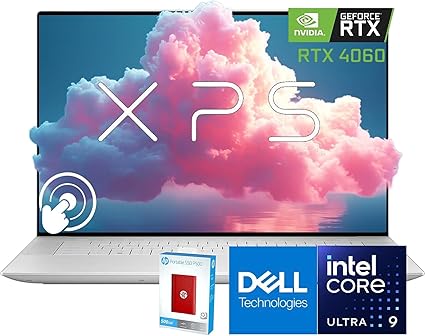
Best for: Everyday designers who want a mix of beauty and performance.
Specs (Recommended):
- Intel H-series CPU
- 32GB RAM
- 1TB SSD
- 3.5K OLED display
Pros:
- Premium design and thin form factor
- Excellent display for color-sensitive work
- Great CPU for CAD and design
Cons:
- May thermal-throttle under long render loads
The XPS is a great all-rounder — portable enough for travel, yet powerful enough for real design work.
⚙️ Recommended Specs (Summary Table)
| Component | Minimum | Ideal for Professionals |
|---|---|---|
| CPU | Intel i7 / Ryzen 7 / Apple M5 | Intel i9 / Ryzen AI 9 / M5 Max |
| GPU | RTX 4060 / Integrated | RTX 4070–4090 / Pro RTX |
| RAM | 16GB | 32–64GB |
| Storage | 512GB SSD | 1–2TB NVMe SSD |
| Display | Full HD IPS | OLED / 4K HDR (100% DCI-P3) |
💼 Which Laptop Is Right for You?
| Type of Designer | Best Choice |
|---|---|
| Student / Beginner | Dell XPS 15 (Base) or older ProArt model |
| Freelancer / Small Studio | ASUS ProArt P16 or MSI Creator Z16 |
| High-End Jeweller / Rendering Expert | Lenovo ThinkPad P1 Gen 8 or MacBook Pro M5 Max |
| Mac-Only Workflows (No MatrixGold) | MacBook Pro M5 (14″/16″) |
💬 Real-World Advice
- Don’t skimp on RAM. Rhino + KeyShot + Photoshop together can easily eat 24–30GB.
- Color matters. Choose laptops with at least 100% DCI-P3 color gamut for true gemstone tones.
- Keep it cool. Rendering heats up any laptop — good cooling equals long-term reliability.
- Use a color calibrator. Tools like X-Rite i1Display keep your golds from looking green.
- Get external backup. A fast SSD is your safety net for every precious design you make.
FAQs
Most professional jewellers use Rhinoceros (Rhino) paired with MatrixGold — this combo is powerful for detailed 3D modelling and realistic renders. Other popular tools include ZBrush, Blender, and KeyShot for artistic sculpting and rendering. Each has its strengths, but Rhino + MatrixGold is the industry favorite for precision.
Not really. SketchUp is great for architecture and product concepts, but it lacks the precision and advanced surface tools needed for small, detailed designs like rings or gemstones. You can sketch ideas in it, but for actual jewellery CAD work, you’ll want something more specialized like Rhino or MatrixGold.
AutoCAD can handle 2D drawings and basic 3D shapes, but it’s not ideal for complex organic models. It’s great for technical plans, but for artistic, curved jewellery designs, dedicated 3D modelling software like Rhino, MatrixGold, or Blender gives much better control and results.
🧠 Final Thoughts
The best laptop for jewellery designing isn’t just about raw specs — it’s about workflow compatibility, display accuracy, and how it feels to create on it.
If your tools are mostly Windows-based (Rhino + MatrixGold + KeyShot), the ASUS ProArt Studiobook 16 or Lenovo ThinkPad P1 are unbeatable.
If you live in the Apple ecosystem and rely on Rhino for Mac, the MacBook Pro M5 gives you everything — speed, battery, and beauty in one.
Whichever path you choose, remember: your laptop isn’t just a machine — it’s your digital workbench, your sketchbook, and your production studio in one compact form. Invest in it like you’d invest in a fine tool — because in jewellery design, precision is everything.



